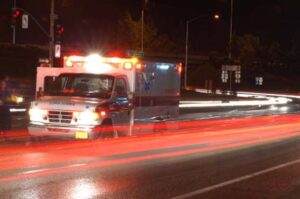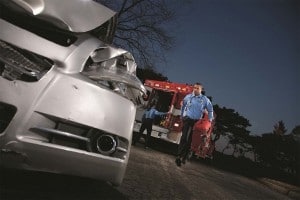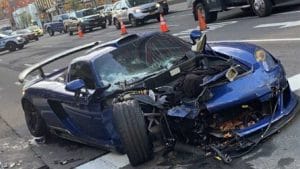
Traffic fatalities were expected to be down in 2020 due to the pandemic, but the total number of deaths is up one and death rate has jumped significantly.
The U.S. highway death rate surged by 20% during the first half of this year, even as Americans sharply reduced travel due to the coronavirus pandemic.
If the preliminary federal data holds, it would mark one of the sharpest rises in motor vehicle deaths on a miles-driven basis that the U.S. has seen in decades. And, if June is any indication, the situation could get substantially worse as more Americans return to their stores, offices and factories or simply start driving again, warned the National Safety Council.
“Because of COVID-19 and (state-mandated) shelter-in-place orders earlier this year, the country should have reaped a safety benefit from less traffic,” said Lorraine Martin, president and CEO of the National Safety Council, or NSC. “Instead, our soaring rate of deaths speaks to our need to improve safety on our roads. Clearly, we must work harder as a society to reverse this trend, especially since the pandemic is not nearly over.”
(Labor Day traffic fatalities expected to approach 400 people.)
There are two ways in which safety regulators and experts track highway deaths: the total number of people killed in various crashes, and the number of those killed for every 100 million miles driven.

The NSC notes that the death rate per 100 million miles is up despite overall traffic levels are down 17 percent.
The raw number came to 36,120 highway fatalities in 2019, according to the National Highway Traffic Safety Administration, the third year in a row that fatalities fell, even as travel increased. That reversed the surge seen during the middle of the past decade.
The fatality rate, meanwhile, dropped to 1.10 per 100 million miles driven from 1.13 per 100 million in 2018.
But the improvements seen in recent years vanished this year. Based on preliminary figures, the U.S. experienced a 20% jump in the fatality rate, with total highway deaths increasing by 1%, the NSC noted, even though American motorists clocked 17% fewer miles during the first half of the year.
What is particularly worrisome, the non-profit safety group noted, is that the upward trend continued in June, the point when most U.S. states began lifting quarantines and many Americans took to the road again. Travel was still down 17% for the month but the death rate per 100 million miles soared by a
“staggering” 34.4%, the NSC noted, adding that June was the first month since the pandemic began that “both the number of fatalities and the death rate increased in a single month.”
(Driver fatality rates rise for third consecutive month.)
The question is why? With the numbers still not formally confirmed by NHTSA, the NSC is taking a cautious stance when it comes to pointing fingers, said Maureen Vogel, though the spokesperson suggested that with fewer cars on the road “some drivers saw that as an invitation to drive recklessly.”

The lighter traffic volumes due to shelter-in-place orders have given some drivers a little too much courage.
That has been echoed by other authorities across the country in recent months, including the Governors Highway Safety Association, which has pointed to data showing significant increases in average highway speeds in much of the country. The California Highway Patrol has handed out substantially more tickets since the pandemic began to motorists exceeding 100 mph.
Distracted driving and driving under the influence of drugs and alcohol have also been cited by safety experts as possible contributors to this year’s surge in highway fatalities.
In a new report, the NSC noted that the overall increase is far from uniform on a state-by-state basis, Vermont seeing a 91% increase in the total number of highway deaths from January through June, while Wyoming had a 49% decline.
The seven states that saw the biggest dip in total deaths:
- Wyoming (-49%, 39 fewer deaths)
- Alaska (-31%, 11 fewer deaths)
- Hawaii (-27%, 16 fewer deaths)
- Iowa (-24%, 35 fewer deaths)
- North Dakota (-20%, 9 fewer deaths)
- Oregon (-19%, 41 fewer deaths)
- Idaho (-16%, 15 fewer deaths)
The seven states with the biggest increases:
- Vermont (+91%, 10 more deaths)
- Connecticut (+44%, 45 more deaths)
- District of Columbia (+42%, 5 more deaths)
- South Dakota (+34%, 11 more deaths)
- Rhode Island (+31%, 8 more deaths)
- Arkansas (+21%, 51 more deaths)
- Missouri (+18%, 68 more deaths)
(High-speed crashes rise as drivers go faster due to lighter traffic due stay-at-home orders.)
